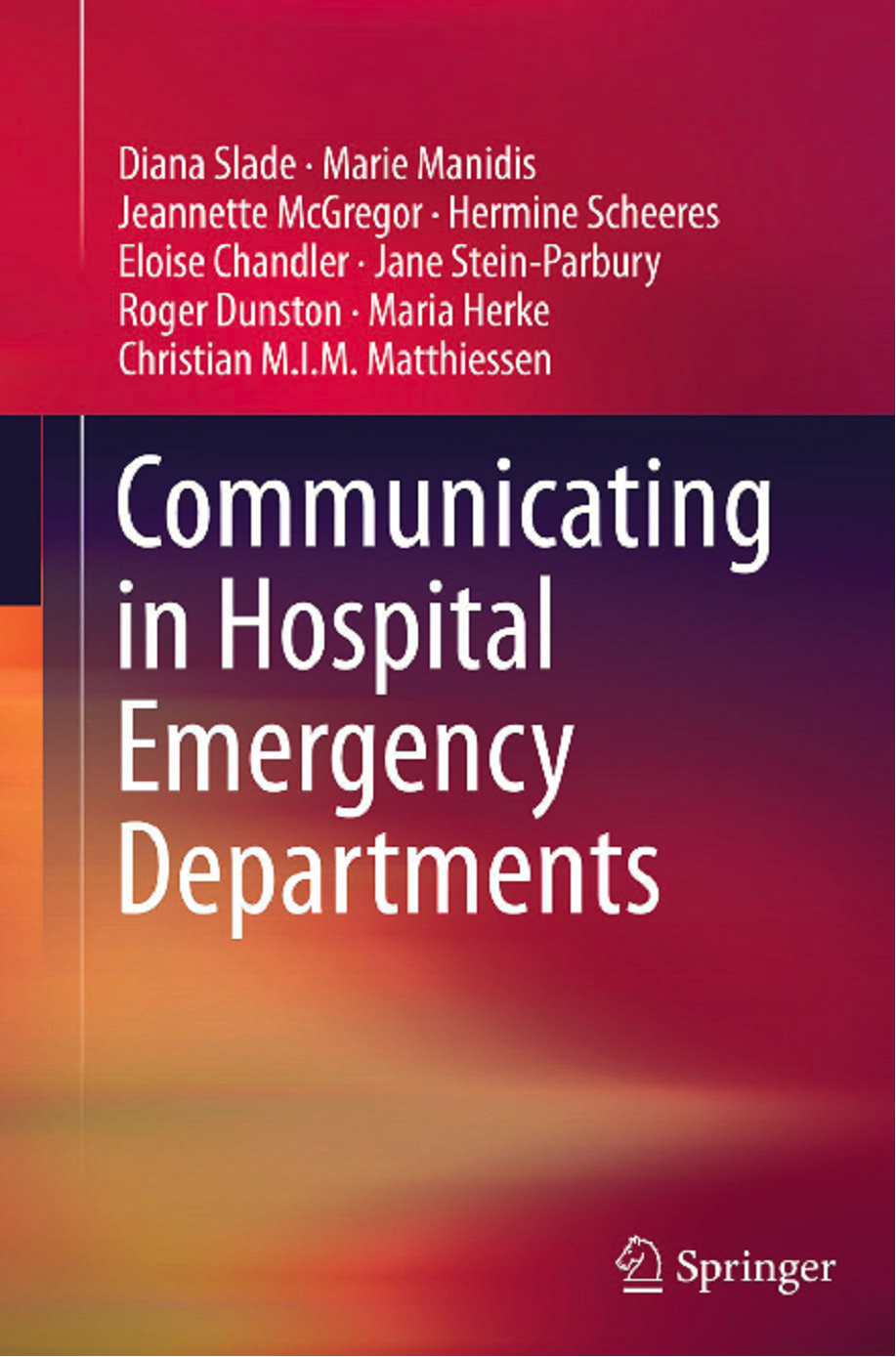|
Introduction of the book
|
This book was conceived in response to the increasing recognition of the central role of communication in effective healthcare delivery, particularly in high-stress contexts such as emergency departments. Over a three-year period, the research team investigated communication between patients and clinicians (doctors, nurses and allied health professionals) in five representative emergency departments (EDs). Combining qualitative ethnographic analysis of the social practices of each ED with discourse analysis of the spoken interactions between clinicians and patients, the book describes the communicative complexity and intensity of work in the ED and, against this backdrop, identifies the features of successful and unsuccessful patient-clinician interactions. Drawing on authentic examples of communication within the ED, the book provides detailed, comprehensive communication strategies for healthcare professionals that can be readily transferred and integrated into everyday practice.
|
|
Contents
|
1 The Role of Communication in Safe and Effective Health Care
2 The Context of Communication in Emergency Departments
3 The Patient’s Journey in the Emergency Department from
Triage to Disposition
4 Communication Risk in Clinician–Patient Consultations
5 Effective Clinician–Patient Communication: Strategies for Communicating Medical Knowledge
6 Effective Clinician–Patient Communication: Strategies for
Bridging the Interpersonal Gap
7 Action Strategies for Implementing Change .
|
|
Forwards
|
Professor Diana Slade and her colleagues have written an innovative and practical book on communication and relationships in emergency departments and their effects on the patient experience. Rarely does one find a book that so seamlessly translates research findings into practical action strategies. The book is an invaluable resource for the training of physicians, nurses, hospital administrators and others in healthcare.
Elizabeth A. Rider, MSW, MD, FAAP, Department of Pediatrics, Harvard Medical School, Chair, Medicine Academy, National Academies of Practice
My participation in the UTS Emergency Communication project provided extraordinary insights into the complexities and subtleties of communication encounters during a patient’s emergency department journey. Personally I found the discussion and feedback both fascinating and rewarding. This project, driven by the dedication and expertise of Diana’s team, has made a lasting impact on my daily work, and I hope will improve emergency patient care into the future.
Dr Nick Taylor, Emergency Medicine Specialist, The Canberra Hospital
The captured clinical conversations between doctors, nurses and patients are fascinating... The discussion and conclusions provide a rare insight into an integral and critical component of Emergency Medicine practice. The team, led by Professor Slade, was truly unobtrusive, professional and personable.
Dr Marian Lee, Emergency Physician, Director of Emergency Medicine Training
|







 ircchpolyu@gmail.com
ircchpolyu@gmail.com  +852 2766 5602
+852 2766 5602